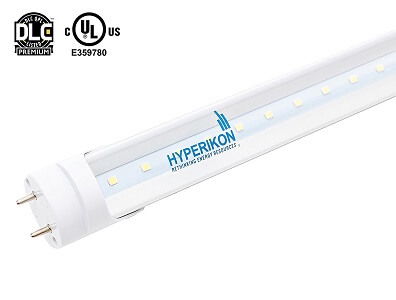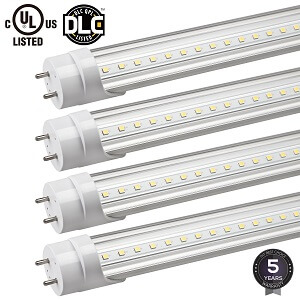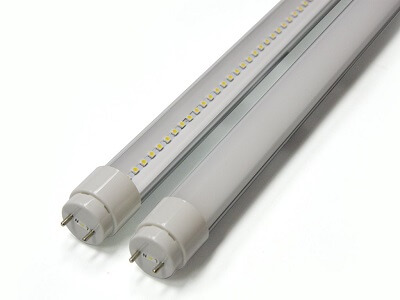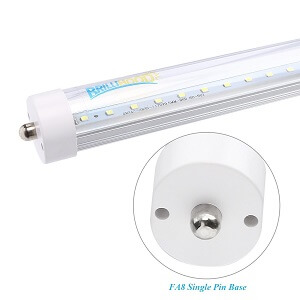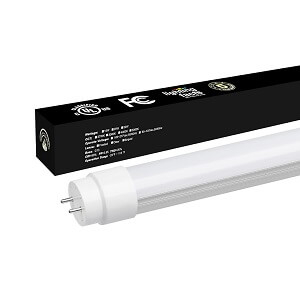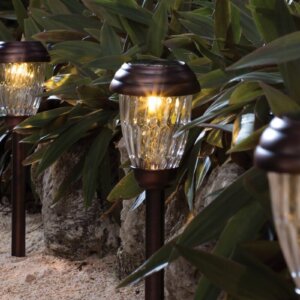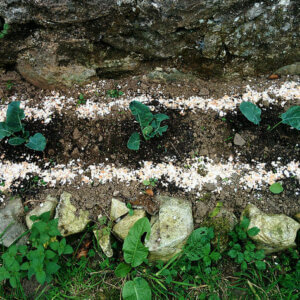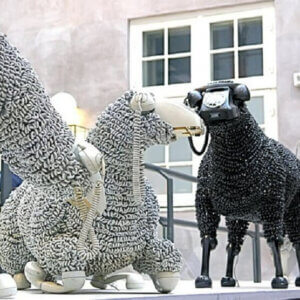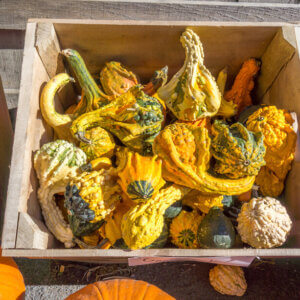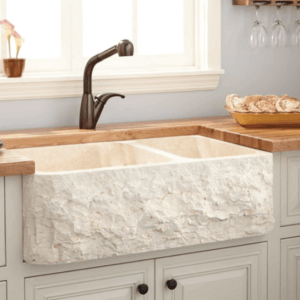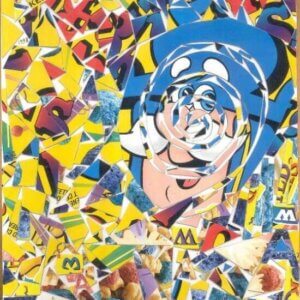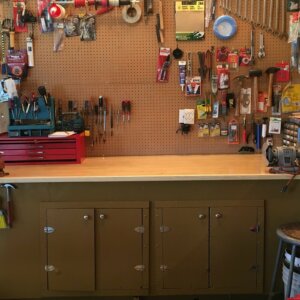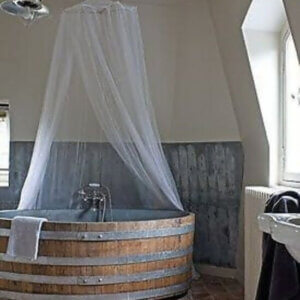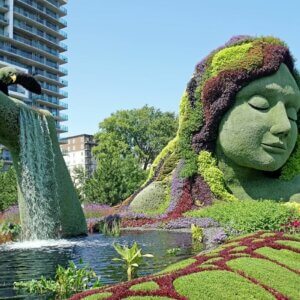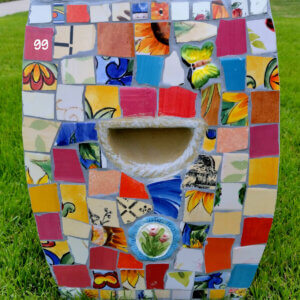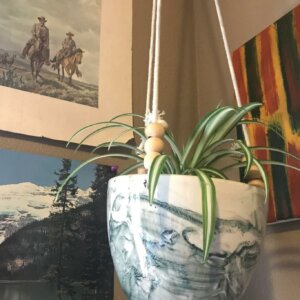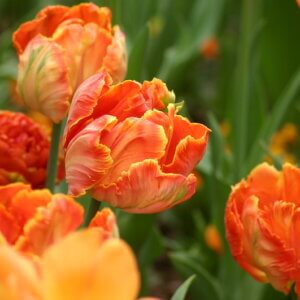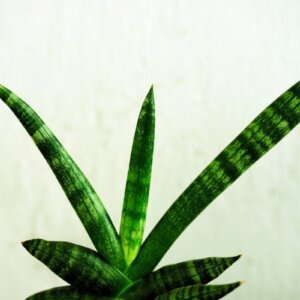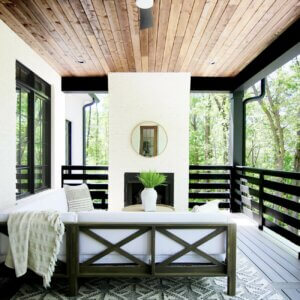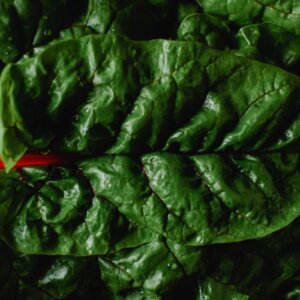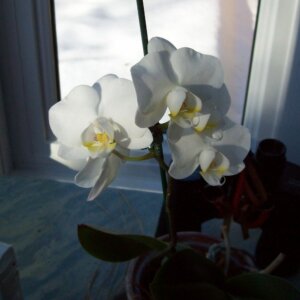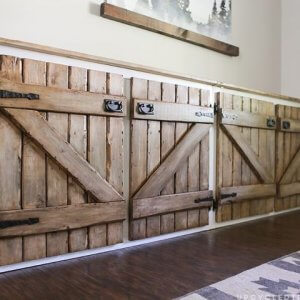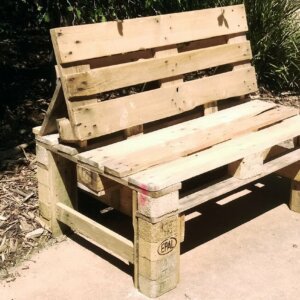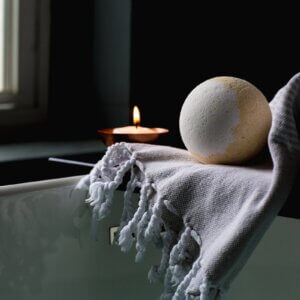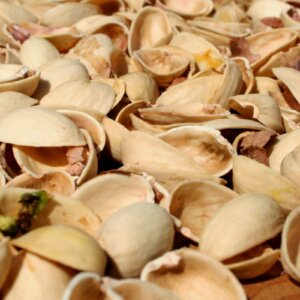Fluorescent shop lights were standard in most workshops, but LED tubes have recently become a viable replacement. In fact, some new LED tubes work in fixtures designed for fluorescents.
The upfront cost of LEDs is much higher than fluorescent bulbs, however, they have several benefits. Most importantly, they’re much more energy efficient than fluorescents, so you’ll easily recoup the upfront cost. They also last much longer, which means less hassle. With LEDs, you won’t have to waste time going to the hardware store when you should be working on a project.
Select An LED With The Right Wattage And Length
The LED bulb that you buy needs to be able to handle the wattage of your fixture. Some more advanced (and therefore more expensive) LED bulbs have built-in variable wattage.
Cheaper bulbs need to be able to handle the current in the place they’re going. The conversion should be on the packaging, but check this conversion table to be sure.
You’ll also need to select the right size of bulb. Make sure to check the current bulb in the fixture before you buy to ensure the new LED bulb will fit. Take a sketch or picture of the bulb end to make sure that you purchase a compatible replacement.
Choose An LED With The Right Luminescence
Early LEDs emitted a bluish light that was too bright for some people. As LEDs have become more sophisticated, they have begun to be sold with a variety of luminescences. You can now find LEDs that emit light on any part of the spectrum.
Pick An LED That’s Ballast Compatible
Fluorescent fixtures have a component, called a ballast, that restricts and balances the flow of current into the bulb, preventing overheating.
Since LEDs don’t need as much energy, they don’t need a ballast. Older (and cheaper) LEDs won’t work in a fixture with ballast. You’ll have to remove the ballast in your fixture to make the bulb work. Newer, more expensive LED bulbs—called plug and play bulbs—have a ballast bypass unit built in, and should work in any fixture.
We’ve surveyed LED tubes from major manufacturers, and listed our favorites, but we haven’t listed options for every type or size of fixture. You might have to search on Amazon yourself to find the right fit.
Products
Hyperikon T8 LED Light Tube, 4ft, 18W (40W equivalent)
Remove ballast
Estimated cost: $15-20 for one
The Hyperikon T8 LED Light Tube, 4ft, 18W (40W equivalent) is a best-seller for a reason. It’s available in five luminescences, and will last for at least 45,000 hours. You will have to remove the ballast in an old fixture, but the Hyperikon is worth the time.
Torchstar 4 Pack Hybrid T8 4ft 18W (40W Equiv.) LED Shop Light Tube
Plug and play
Estimated cost: $35-45 for four ($8.75-$11.25 each)
These Torchstar Hybrid T8 4ft 18W (40W Equiv.) LED Shop Light Tubes are a great option for someone who doesn’t want to remove a ballast from an old fixture. Just buy them and plug them in. We love that Torchstar sells these units in two luminescences: daylight (5,000k) or cool white (4,000k.)
innoLED Plug-N-Play 4ft 18 Watt T8 LED Tube
Plug and play
Estimated cost: $15-25 for one
The innoLED Plug-N-Play 4ft 18 Watt T8 LED Tube is another plug and play unit. They have a 50,000 hour (approx. five years) lifespan and emit a cool white (5,000k) light.
Brillihood T8 T12 8FT LED Tube Light
Remove ballast
Estimated cost: $200-250 for ten ($20-$25 each)
Each of the Brillihood T8 T12 8FT LED Tube Light bulbs has a 50,000 hour lifespan. You’ll need to remove the ballast to install these units.
SHINE HAI T8 LED Shop Light Tube
Remove ballast
Estimated cost: $250-300 for 12 ($21-$25 each)
The SHINE HAI T8 LED Shop Light Tube is a simple and straightforward indoor-only LED. It gives off 5,000k light, and is a strong option at a low price point.

